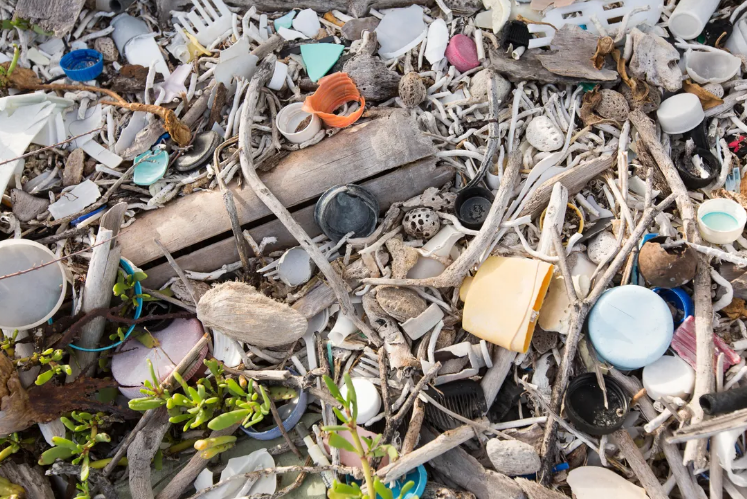
Plastic pollution is a global problem, with a flood of plastic now reaching as far north as the Arctic. The news comes from an Alfred Wegener Institute study, published Tuesday in the Nature Reviews Earth & Environment journal. “Our northernmost ecosystems are already particularly hard hit by climate change,” said Melanie Bergmann, a biologist at the Alfred Wegener Institute. “This is now exacerbated by plastic pollution. And our own research has shown that the pollution continues to become worse.”
The level of plastics found in the Arctic is especially troublesome, considering the region is already hard hit by climate change. With 19 million to 23 million tons of plastic litter ending up in the world’s water, microplastics and nanoplastics are being found in all marine organisms(生物). While research is still young, early studies suggest that dark plastic particles(微粒) in snow can absorb more light, leading to faster melting. The darker visible parts of land then absorb light and heat, causing more rapid warming.
The flood of plastic is reaching the Arctic through a few channels. These include ocean currents from the Atlantic, the North Sea and the North Pacific, as well as particles being carried by northward winds. Water from rivers also carries plastic north, which contributes to the pollution now being found. Then there’s wastewater pollution from Arctic communities and plastic debris(碎片) being thrown from ships, which includes nets and ropes.
“In the Arctic, marine animals probably take in microplastics accidentally, which may lead to reduced growth and reproduction. Microplastics are even likely to run in the blood of humans,” said Bergmann. Just last month, microplastics were found in human blood for the first time. At the current pace, plastic production is expected to double by 2034, according to a 2014 study by the Federal University of Technology Akure in Nigeria.
本时文内容由奇速英语国际教育研究院原创编写,未经书面授权,禁止复制和任何商业用途,版权所有,侵权必究!(作者投稿及时文阅读定制请联系微信:18980471698)
1.The underlined word “exacerbated” in the first paragraph may mean _____.
A worsened
B improved
C balanced
D reached
解析:选A。A 词义猜测题。根据前一句的“Our northernmost ecosystems are already particularly hard hit by climate change”可知,北极地区的生态系统已经受到气候变化的严重冲击,并结合后一句的“the pollution continues to become worse”可知,塑料污染加剧了该地区的恶化。故选A。
2.Why do the dark plastic particles make melting fast?
A Marine animals like them.
B They attract more heat.
C People ignore the effects.
D The Arctic is populated.
解析:选B。B 细节理解题。根据文章第二段的“early studies suggest that dark plastic particles(微粒) in snow can absorb more light, leading to faster melting.”可知,冰雪里的深色微粒会吸收更多的光(热),因此会加快冰雪的融化速度。故选B。
3.What is the main idea of the third paragraph?
A What the water in the sea like to carry.
B Where ships with plastic debris come from.
C Why there are so strong northward winds.
D How the plastic arrived at the Arctic.
解析:选D。D 主旨大意题。根据文章第三段第一句“The flood of plastic is reaching the Arctic through a few channels.”塑料洪流正通过几个渠道到达北极,可知该段主要是讲述塑料颗粒是如何到达北极的。故选D。
4.What is the bad news for the plastic pollution?
A The less attention from scientists.
B Accidental throwing of rubbish.
C The increase of plastic production.
D Plastics running in human blood.
解析:选C。C 推理判断题。根据文章最后一段最后一句“At the current pace, plastic production is expected to double by 2034”可以得知塑料制品的产量要翻倍,这对治理塑料污染是不好的消息。故选C。